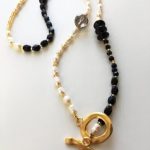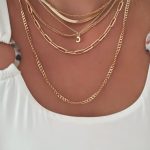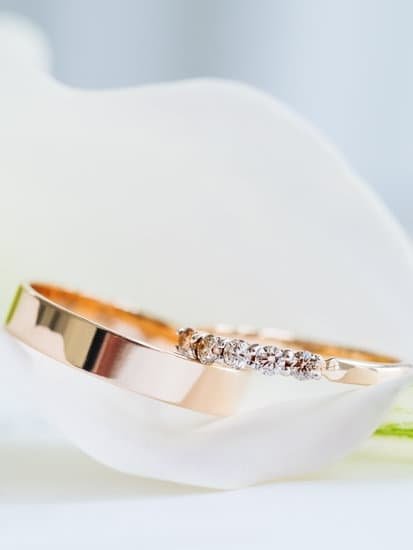There are multiple benefits to people who learn how to repair metal jewelry. It can be a valuable skill for jewelry makers and those involved in the business of selling jewelry or repairing it for customers. With the right tools, time and patience, anyone can fix broken jewelry with either traditional tools or specialized pieces of equipment.
This can be a great hobby or an additional source of income depending on the types of materials you wish to use as well as how much time you put into it. There are also certain cases where being able to fix metal jewelry is essential such as antique heirlooms that need special attention or repairs that may require soldering parts together.
Required Tools 2019
Before attempting to repair metal jewelry one needs to have all the necessary items at hand. These include pliers, tweezers, needles, magnifying glasses and safety goggles among other common items.
Aside from these things it is also important that you get the right types of tools, depending on the kind of metals being working with such as copper, brass, aluminum and silver for example. Specialized tools like solder irons, hammers and tongs might be necessary for more complex repairs as well.
Different Types of Repairs
Depending on what jewellery piece needs repairing, there are different ways one can approach this problem without compromising its current form or structure. In many cases re-attaching broken elements is relatively easy with just a few basic steps like using glue or wire wraps and twistings in order to lock everything into place but sometimes specialized techniques like soldering components together might be required in order for it become completely functional again.
Additionally if rust has formed in certain spots sanding down the area until it is smooth will help combat this issue before any further problems occur due to corrosion-related damages.
Types of Metal Jewelry and Which Types Are Easier to Repair
Metal jewelry is a popular accessory because it is durable and comes in a variety of styles. Types of metal jewelry range from gold, silver, brass and copper to stainless steel and titanium. While all metals can become damaged or break, some are more straightforward to repair than others.
Gold and silver are both metals that have a higher malleability compared to other metals. This means they will be easier to shape when heated up, which makes them ideal for repairs. Stainless steel is also an accessible type of metal that can be manipulated with pliers and hammered back into place if needed.
Common Fixes/Repairs For Metal Jewelry
Whether the metal jewelry needs only minor reparation or a complete makeover, there are several ways to fix it up again. A simple way to repair light damage on metal jewelry is using polishing cloths or creams with abrasive particles meant for cleaning the surface of the metal piece.
Minor dents or scratches on gold or silver pieces can be filled with solder paste consisting of flux and fine silver particles that are pressed into cracks then melted by an average soldering iron at low temperature.
When working with stainless steel pieces flat-nosed pliers come useful for bending back stray wires that may protrude from the design’s original look but utmost care must be taken not to over bend the parts as they could break further in the process.
Jewelers’ Work For Repairing Metal Jewelry
When major repairs need to be done, such as replacing missing stones, reshaping irregular types of metals like brass or copper that lack the malleability of gold or straightening out intricate designs made out of sterling silver wire – it’s time to get professional jewelers help in fixing your beloved piece of jewelry.
Depending on the complexity of each job their services range from full reconstructions to restoring clasp defects, stone replacements and restringing loose necklaces among many other specialty tasks.
Jewelers may use any combination between hand tools, heat sources such as torches or laser welder machines whichever necessary depending on each specific case as well as specialists chemicals dedicated exclusively for polishing certain types of metals restoring them closer to their original shape and shine.
Investing in the Right Type of Equipment
The repair of metal jewelry is a delicate and technical process that requires the right equipment and materials. For example, tools such as soldering irons, torches, awls, and various varieties of pliers are needed to fully repair jewelry. It is also important to procure different types of soft metals and alloys for soldering and the addition of new pieces.
When selecting materials, it is important to consider if a particular metal is compatible with others in terms of alloy corrosion resistance. This may require additional research regarding the type and construction of the jewelry being repaired.
Soldering Jewellery Pieces
When repairing metal jewelry, soldering plays an essential role in completing a successful jewelry repair job. Soldering includes combining two pieces by melting an alloy such as silver or gold in between them for a stronger bond. It may also involve filling in any hollow spaces or chips that are present on the design elements of the jewelry piece.
Before starting to solder, it is important to prepare both pieces so that they fit together perfectly before applying heat because otherwise any errors can lead to distortion when the piece cools down again. If done correctly, it should be noted that each individual joint created through a soldering connection should have even edges all around – no matter how small – indicating proper heating has been applied during this aspect of repairs.
Polishing Jewelry After Repairs
Mot completion of repairs usually entails some kind of polishing processes to enhance the visual appeal. Whether it’s bringing out its luster or simply restoring its shine, cleaning up any lingering residue is still advised after repairs are complete since otherwise it can tarnish quickly over time due to corrosion caused by exposure with outside particles such as sweat or dust.
Applying polishing creams designed specifically for metals can help protect the newly repaired surface from future corroding more effectively than other products available on market place shelves today. With all these tips and requirements for properly repairing metal jewellery, everyone’s undertaking this task must determine which materials are best suited for their unique situation as every single detail matters and will influence the overall outcome.
Gathering the Necessary Materials
When it comes to repairing metal jewelry, the most important step is gathering the necessary materials. Be sure to have on hand a small bowl or container of warm water, aluminum foil, some baking soda, a pair of tweezers, some needle-nose pliers, a soft cloth and jewelry polishing cloth. The latter two items can be purchased at most hardware stores or online.
At first thought many people are surprised to hear that you can repair your own metal jewelry but it is true. With just a few simple steps you will be able complete the process yourself in no time.
The next step is preparing the jewelry for repair by using an acid cleaning solution. This can be done by combining warm water with baking soda to create an acidic wash. Once the solution is mixed together well, place your piece of metal jewelry into the solution and let sit for approximately ten minutes.
The warm water helps open up any of the tiny spaces within which dirt has accumulated and provides a better surface for cleaning. Meanwhile, the acid content (baking soda) will help remove any discoloration from your jewels as well as any dirt that has been stuck in its crevices over time.
Once this preparation step has been completed use tweezers to remove any residual dirt or discoloration on or in between each piece of metal on the item of jewelry being repaired. Tweezers are perfect for getting in all those tiny spaces due to their size and shape making them perfect for navigating these tight areas where dirt often builds up and becomes easily trapped over time.
After removing all visible signs of tarnish, rinse off the pieces with clean water and delicately pat dry with a soft cloth before starting repairs await finalization by polishing off tarnish residue on metal surfaces giving them a beautiful shine once again.
Preparing the Metal Jewelry for Repairs
In order to repair any type of metal jewelry, you will need to properly prepare it for the process. This includes cleaning it with a mild soap and water solution before beginning any repairs. After wiping away any dirt or remnants of any products used to clean it, use an old toothbrush to gently remove any remaining dirt that may have been missed.
Make sure to dry the jewelry off once you’re done before you move on to the next step. It is important that the jewelry is completely dry so that no extra moisture can be added which can result in more damage during the repair process.
Welding as a Method of Repair
Once your metal jewelry is clean and dry, you can begin by using welding as a repair method. Different metals require different approaches-some must be heated until they reach a certain temperature before they are welded together, while others can only be held in place prior to welding them together.
Using this method doesn’t require much skill and can be done without too much practice beforehand. If your welds don’t appear perfect right away, don’t worry since these issues can usually be resolved later on in the process.
Soldering as a Method of Repair
Soft metals like silver, gold, and brass are often easier to repair than harder metals due to their malleability when heated. Soldering offers an effective way of repairing such softer materials by creating strong bonds at relatively low temperatures compared to other methods such as welding.
This also minimizes the chance of warping or discoloration and allows for sections of jewelry to be joined together more quickly and easily than with other methods such as gluing or epoxying components together would require more heat exposure for curing which could damage delicate parts or ruin finishes like plating or enameling that have already been applied previously.
Different Repair Techniques and Tools for Different Types of Jewelry
Repairing metal jewelry is not as difficult as it may seem. Depending on the type of jewelry damage, different techniques and tools will be needed to repair it correctly. In this article we will take a look at some of the more common types of jewelry repairs and what tools are required.
One of the most common types of repair for metal jewelry is dealing with bent pieces such as pendants or rings that have been accidentally bent out of shape. This can often be done using simple pliers to reshape the item.
It is important to do this carefully however; otherwise you could end up denting the metal or damaging any stones or gems set in it, which would mean having to replace them.
With large items, such as larger pieces of jewelry like necklaces or brooches, you may need higher quality tools in order to do the job correctly, especially if there are fragile components like detailed filigree work or tiny gemstones that need extra attention while being handled and shaped back into place.
Another kind of repair involves resetting stones into their settings. For this you’ll need very fine tweezers to handle small objects such as individual stones and then special tools like setting pliers which are specially designed for gripping these delicate little items when placing them into their settings accurately and safely.
You may also need an ultrasonic cleaner if there are several elements including stones AND complicated clasps requiring special care when cleaning so all parts function properly after re-assembly occurs. With a careful hand and good quality instruments this process can be accomplished quickly, giving a beloved piece new life once again.
Common Types of Repairs That Can Be Done
Metal jewelry has been used since ancient times and is often handed down from generation to generation. Unfortunately, metal jewelry tends to be susceptible to wear and tear over time and will likely need periodic repairs in order to maintain its integrity.
Thankfully, repairing metal jewelry is not an overly complicated task. No matter the type of jewelry, there are some basic steps you can take in order to repair your items so that they may stay in good condition for years to come.
By far the most common type of metal jewelry repair is repositioning stones or prongs that have loosened due to age or environmental conditions. This is a relatively simple repair that can either be done at home or by a competent piece of equipment such as a jeweler’s loupe and tweezers.
The process involves carefully re-closing any loose clasps or prongs around the setting, followed by checking the integrity of the stone’s setting. If necessary, use superglue (or specialized jewelry glue) to reattach components that have been damaged or dislodged.
Another common sort of jewelry repair work involves refinishing tarnished surfaces or cleaning them up through polishing with a soft cloth. Over time it is natural for any metal filings on jewelery pieces to accumulate dirt and dust which can detract from a piece’s aesthetic appeal and also lead to corrosion if left untreated for too long.
Refinishing metals involves removing debris from the item via soap and water before buffing surfaces with a soft cloth or special jewellery polishes. If you don’t already own the necessary supplies, many local hardware stores sell everything you will need for this task at a relatively low cost compared with professional assistance.
Finally, replacing missing components or carrying out more sophisticated repairs such as rebuilding broken settings falls within the category of more advanced methods that require specialist attention due to their complexity (or even machinery). For example if part of your necklace has snapped off then you may need assistance from an experienced jeweller who can solderify it back onto your item carefully without causing further damage in the process.
Similarly intricate craftsmanship techniques like soldering wires into delicate patterns might also need professional advice before attempting them at home with improper tools could again result in further harm being caused rather than restoration taking place.
Safety Tips To Keep in Mind During Repairs
When it comes to repairing metal jewelry, safety must be your highest priority. Repairing metal jewelry can involve activities involving heat, chemicals and sharp tools which can put you at risk of getting injured if done improperly. Therefore, it is important to stay mindful and practice safe habits when attempting to repair metal jewelry.
Firstly, always make sure that you have a clear working area that is free of clutter and away from any open flames or heat sources as the use of heat or solder can cause sparks which may result in an accidental fire. Additionally, you should wear protective gear such as a face mask and goggles while using any tools or chemicals in order to keep particles from entering your lungs and eyes.
Secondly, reading through the instructions of any tools or chemical solutions you are going to use prior to starting work on the jewelry piece is extremely important. Without approaching the repair with thorough knowledge of the task at hand, you can easily damage the piece of jewelry beyond repair or worse get injured in the process.
Thirdly, be mindful not to mislead yourself about your own skillset. Sometimes jewelers overestimate their abilities when trying to repair metal pieces due to being overconfident in their craftsmanship.
This can lead them down a road of disappointment when they find out that what they thought was simple turned out far more difficult than originally anticipated because they were unaware how complex certain tasks were going to be before beginning. The best way around this is to start with simpler projects and gradually build up experience until you feel comfortable taking on more complex challenges with your metalwork repairs.
Troubleshooting Common Problems on Metal Jewelry
Metal jewelry can be a great way to make a fashion statement, but sometimes it can be prone to damage. Scratches, dents, and corrosion can all be common problems with metal jewelry. Keeping your metal jewelry maintained and in good condition is not only important for aesthetic purposes, but also for ensuring that it will last as long as possible. There are several ways that you can repair metal jewelry should it become damaged or worn down.
If the issue is minor surface damage such as scratches or dents, there are several ways that these issues can be fixed quite easily at home. The most popular option is to use brass brush specifically designed for goldsmithing.
This type of brush will work to carefully polish the surface of your jewellery until any blemishes have been removed. For more stubborn marks and scratches, you may wish to consider using polishing waxes and compounds which are specifically designed for this purpose – though caution should always be used when handling chemicals.
Corrosion is another very common issue with metals such as silver and copper particularly if they’ve been exposed to saltwater or other elements over time. Again, careful cleaning with a soft cloth and brass brush should help remove light corrosion from the surface of your jewelry piece; however if it has corroded heavily then it may need professional attention in order to avoid further damage occurring internally.
If this is the case then an experienced jeweler will strip away the original finish of the metal by chemically dipping it into acid before replating it with a fresh finish which will help protect against any further degradation.
It’s also advisable to keep silver items away from water where possible in order to preserve their appearance over time, alongside regularly cleaning them with a leather cloth which contains special maintenance compounds that serve to protect your silver pieces from tarnishing or discoloring too quickly.
For major repairs and reconstructions on particularly complicated or fragile pieces of metal jewellery then you should always seek out an experienced jeweler who’ll be able to properly assess the situation and recommend how best to proceed with any necessary repairs without causing any additional damage.
Professional jewelers have the expertise required when dealing with delicate structures such as filigree settings or intricate inscriptions so make sure you find somebody who you trust before taking your item into their care.
This way you can get peace of mind knowing that whatever repairs are necessary will be completed quickly, efficiently, and professionally.
Finishing Up the Metal Jewelry Repairs
Repairing metal jewelry requires a few special supplies and techniques. The repair process starts with choosing the right types of materials for the job, from basic to advanced options. You will need to identify what type of material your jewelry is made from in order to choose the correct products and tools.
Many people prefer the simplicity of basic metals like aluminum and copper, but more intricate pieces might require soldering or other specialized methods. With that in mind, let’s move on to finishing up your metal jewelry repairs.
Once you have all of the necessary supplies and tools in place, it’s time to begin making your jewelry repairs. When working with metal, it’s important to be aware that there are elements which can significantly affect how it looks, such as solder chemistry, temperature control, and even expert welding techniques.
These need to be taken into account when completing any metal jewelry or gemstone repairs. Depending on the task at hand, there are several ways to do this.
You may need soldering flux for delicate pieces that can improve adhesion by preventing oxidation. Alternatively if you want a clean look without visible seams then TIG welding could be an option for more experienced artisans.
Even if it’s not necessary, keep some cold galvanizing paste handy as this can help protect certain types of metals from oxidization over time. Additionally you may find some simple replacements available right out at home – like a jump ring swapping out a broken one during necklace repairs – which can often save time while still preserving the intended beauty of the jewelry piece.
Finally you won’t always need additional finishes like electroplating or enameling after making your metal repairs – – however these details could potentially add extra luster depending on circumstances such as expected usage wear or aesthetic preferences. Be sure to consider these factors while evaluating potential design solutions with clients so they are completely satisfied with the end result before being put into use.
In some cases though this step might not be necessary at all if using a heavy base coat of paint or another coating was applied before adding any extra features (i want for example). Ultimately every situation is unique so make sure you make every decision based on what works best for each individual customer and project.
Conclusion
Metal jewelry repair can be a fun and rewarding hobby with some patience and practice. Taking the time to learn the various techniques involved in metal jewelry repair will result in beautiful pieces of craftsmanship which can be appreciated by friends and family. Metal jewelry repair also provides an opportunity to become intimately familiar with different metals, their properties, and their usages, helping the hobbyist develop an appreciation for the wide range of material used in the trade.
From soldering to polishing and finishing, learning each step of metal jewelry repair requires practice to achieve professional results. For many hobbyists this experience can spark a lifelong passion for creating beautiful pieces that stand out from mass-produced offerings. The skills provided by learning metal jewelry repairs are also useful for creating custom pieces of art or simply altering existing ones as desired without having to purchase new items constantly.

Welcome to my jewelry blog! My name is Sarah and I am the owner of this blog.
I love making jewelry and sharing my creations with others.
So whether you’re someone who loves wearing jewelry yourself or simply enjoys learning about it, be sure to check out my blog for insightful posts on everything related to this exciting topic!





